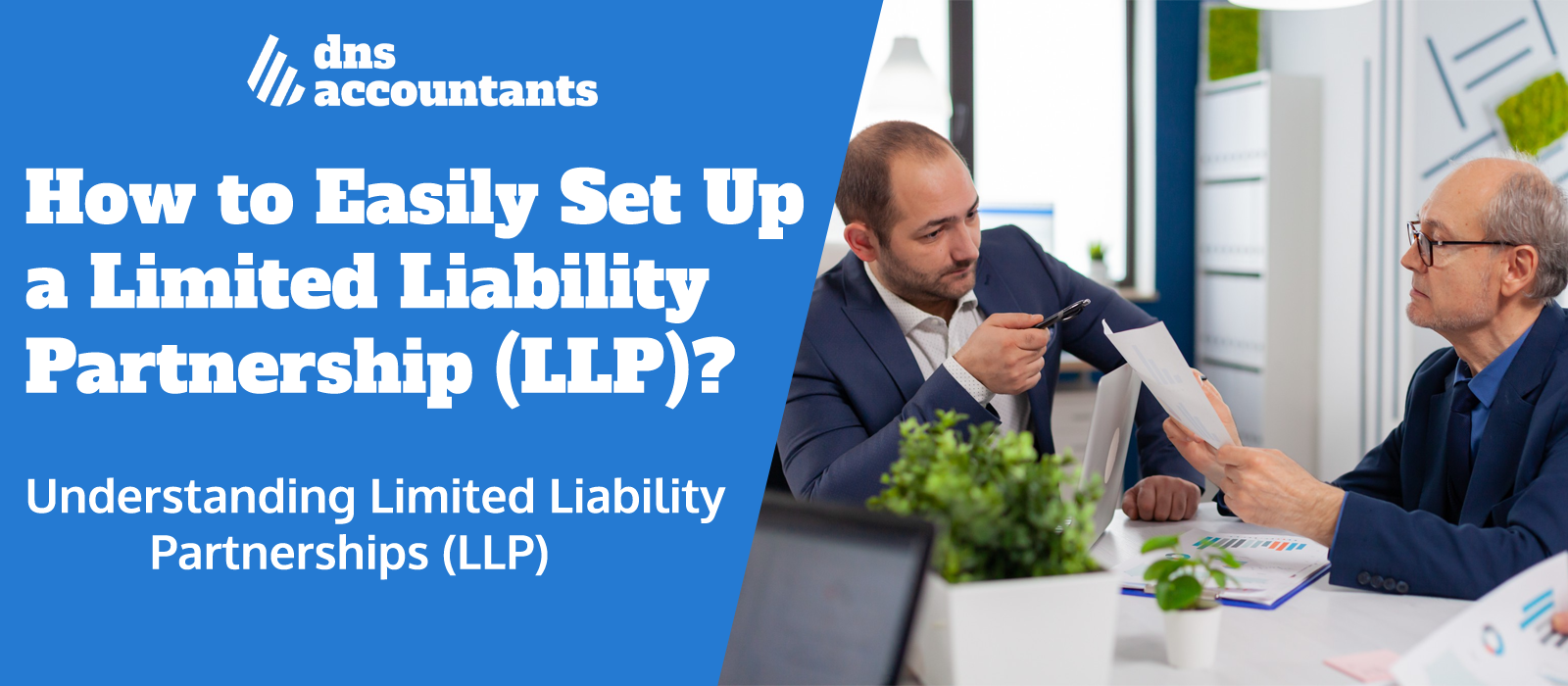
A limited liability partnership (LLP) gives you the benefits of limited liability while keeping the flexibility of a partnership. In this guide, you’ll learn what an LLP is, its pros and cons and how to set one up.
Key Points
- An LLP gives limited liability to its members, separates personal assets from business debts and creates a separate legal entity.
- Despite the benefits of tax and operational flexibility, LLPs have higher regulatory compliance and administrative costs compared to other business structures.
- Setting up an LLP is a simple registration process with specific requirements, including a unique name and a registered office address.
What is a Limited Liability Partnership (LLP)
A Limited Liability Partnership (LLP) is a unique business structure that combines the flexibility of a general partnership with the benefits of limited liability protection. Unlike traditional partnerships where partners are personally liable for business debts, LLPs gives a shield that protects members’ personal assets from the business’s financial obligations. This is ideal for professionals who want to reduce personal risk while keeping operational flexibility through a limited liability partnership agreement.
An LLP is a separate legal entity, it can enter into contracts, own property and employ staff independently of its members. This separate legal status not only enhances the LLP’s credibility but also simplifies many administrative tasks. Members in an LLP are only liable for their investment plus any personal guarantees they have made, there is no liability in a traditional partnership.
The structure of an LLP allows direct management by its partners, it gives a level of flexibility that is not present in more rigid corporate structures. This means partners can tailor their roles and responsibilities to suit their strengths and business needs, creating a more dynamic and responsive business environment.
Whether you’re starting a new business or restructuring an existing one, seek professional advice on understanding the basics of LLPs before you make a decision.
Pros of Forming an LLP
One of the biggest reason to form an LLP is the limited liability protection it gives. Unlike traditional partnerships where partners are personally responsible for business debts, an LLP gives its members protection from such liability beyond their agreed contributions. So your personal assets are protected, reducing financial risk and giving you peace of mind.LLPs also have tax advantages. Members are taxed individually on their share of the profits, there is no double taxation that can happen in limited companies. This structure allows for more tax planning and can result to huge savings. LLPs can also appoint corporate entities as partners, giving flexibility in management and ownership structure.
Forming an LLP is relatively easy, it’s an accessible option for many businesses. The process is simpler than forming a limited company and gives many of the same protections. LLPs are separate legal entities, they can enter into contracts, own property and hire staff independently. This legal status gives a level of professionalism and credibility that can be beneficial in attracting clients and investors.
Cons of an LLP
While LLPs have many benefits, they also have some drawbacks. One of the main disadvantage is the higher regulatory compliance requirements compared to simpler business structures. LLPs must keep detailed records, file annual accounts and comply with various legal obligations. This can be a burden for smaller firms or those without dedicated administrative support.
The administrative costs of LLPs can also be a deterrent. These costs include not only the fees for registration and annual filings but also the need for professional advice to ensure compliance with complex regulations. Managing an LLP can be more complex than other business structures, requires good understanding of legal compliance and operational duties.
Who Can Be an LLP Member?
Anyone with the intention to make a profit can set up an LLP, including individuals and corporate entities. This flexibility allows for a wide range of members, from individual entrepreneurs to large corporations. However, certain individuals, such as undischarged bankrupts, are disqualified from becoming members of an LLP.
An LLP has two types of members. These are ordinary members and a designated member. Designated members have additional responsibilities, including ensuring compliance with statutory requirements and filing necessary documentation.
Corporate bodies, such as other LLPs or limited companies, can also be members, giving even more flexibility in the LLP’s structure. A minimum of two members is required to form an LLP and these members can be located anywhere, including non-UK residents.
Form an LLP with Companies House
Form an LLP with Companies House is a simple process that can be done online or via paper application. The online process is faster and cheaper, with standard fee of £150 for expedited processing. You can also submit a paper application using Companies House Form LL01 but this will take longer to process.
When forming your LLP, you will need to provide specific details including the LLP’s name, registered office address, member information and compliance statements. Make sure your proposed LLP name is unique, not misleading and not suggesting a connection to the government. All LLP names must end with either ‘limited liability partnership’ or ‘LLP’. This is to meet the naming conventions.
Once registered, your LLP will receive a certificate of incorporation which is proof that it has met all the legal requirements for formation. However, LLPs have more administrative responsibilities compared to general partnerships including maintaining a registered office and filing annual accounts.
Registered Office Address
A registered office address is essential for any LLP as this is where government bodies such as HMRC and Companies House will send all correspondence. This address must be located in the area where the LLP is incorporated, whether that be England, Wales, Scotland or Northern Ireland. Having a registered office also gives your company a professional appearance and can protect personal addresses.
Designated members are responsible for notifying Companies House of any changes to the registered office address or other member details. This ensures all official records are up-to-date and the LLP is compliant with legal requirements.
An LLP can use any type of address for its registered office including residential or commercial spaces as long as it meets the legal requirements.
Designated Members
Designated members play a crucial role in the management and compliance of an LLP. They are responsible for ensuring the LLP complies with the LLP Act and relevant regulations. This includes filing annual accounts, keeping accurate records and submitting necessary documentation to Companies House.
In addition to these administrative duties, designated members must inform Companies House of any changes to their name or status, ensuring all records are up-to-date. These responsibilities go beyond those of ordinary members, making designated members essential for the LLP’s compliance and managerial integrity.
LLP Taxation
Tax is a key consideration for any business structure and LLPs have unique advantages. LLP members are taxed on their share of the profits through Income Tax and they need to register for Self Assessment individual tax returns. Unlike corporations, LLPs do not pay Corporation Tax, avoiding double taxation.
Once HMRC is informed of the LLP’s existence, a tax record and unique taxpayer reference number is created for the partnership. Note that corporate members of an LLP pay Corporation Tax on their share of profits applying the applicable corporation tax rate.
This taxation structure means profits are taxed at the individual member level, providing flexibility and tax savings.
LLP Agreement
A well drafted LLP agreement is essential for the smooth operation of your partnership. This agreement is the backbone of managing relationships and operations within the LLP. It allows members to define the management structure, profit distribution and financial arrangements so everyone is on the same page.
The LLP agreement should also include governance structures, roles, responsibilities and voting process for decision making. Dispute resolution mechanisms are crucial to address conflicts among partners without going to court.
Also the agreement should outline the duration and conditions for dissolving the partnership and winding up its affairs.
Converting Other Business Structures to an LLP
Converting an existing business structure to an LLP can offer many benefits including limited liability protection and tax advantages. General partnerships in particular can convert to an LLP as long as they have at least two members.
This process involves updating the business’s registration with Companies House and ensuring all necessary documentation is in place.
Naming Your LLP
Choosing the right name for your LLP is a critical step in the process. The name must be unique and cannot be the same as an existing LLP. It must also end with ‘LLP’ to indicate the business structure. Make sure the proposed name does not resemble an existing company to avoid confusion and potential legal issues.
Names containing offensive terms or suggesting a connection to the government will be rejected by Companies House. You can check the availability of a business name using the Company Name Check Tool.
Registering your LLP protects the partnership’s name and prevents others from using the same name. If you want to trade under a different name you can do so under a ‘business name’ that is different from your registered LLP name.
Summary
In summary, forming an LLP offers limited liability protection, tax advantages and flexibility in management. But be aware of the regulatory compliance and administrative costs involved with this business structure. By understanding the roles of members, the importance of a registered office and the need for an LLP agreement you can set your partnership up for success.
When forming an LLP or converting an existing business take the time to seek professional advice and make sure you meet all legal requirements. With the right preparation and knowledge an LLP can be a solid foundation for your business to grow.
Frequently Asked Questions
What is the difference between an LLP and a limited company?
An LLP provides limited liability protection similar to a limited company, but it functions like a traditional partnership with members taxed individually on their profits. Therefore, the key distinction lies in the operational structure and tax implications.
Can an LLP have corporate members?
Yes, an LLP can have corporate members, including other LLPs or limited companies, allowing for greater structural flexibility.
How do I register an LLP with Companies House?
To register an LLP with Companies House, you can choose the online method for a quicker and more cost-effective process, which requires details like the LLP’s name and registered office address. Ensure all required information is accurately provided for a smooth registration experience.
What are the responsibilities of designated members in an LLP?
Designated members in an LLP are responsible for ensuring compliance with the LLP Act, filing annual accounts, and maintaining accurate records. This role is crucial for the effective governance and legal standing of the LLP.
How is an LLP taxed?
An LLP is taxed at the individual level, with members paying Income Tax on their share of the profits, thus avoiding the double taxation that limited companies encounter.
